merantau
Senior Member
A SHORT WALK UP ILI API
Nestling at the foot of brooding Ili Mandiri, Larantuka, at the eastern end of Flores, is the jumping off point for islands even further east - the Solor Archipelago and Alor. I was headed for Lewoleba on Lembata, which lay between Adonara and Pantar, to climb the fabled Ili Api or "Mountain of Fire".
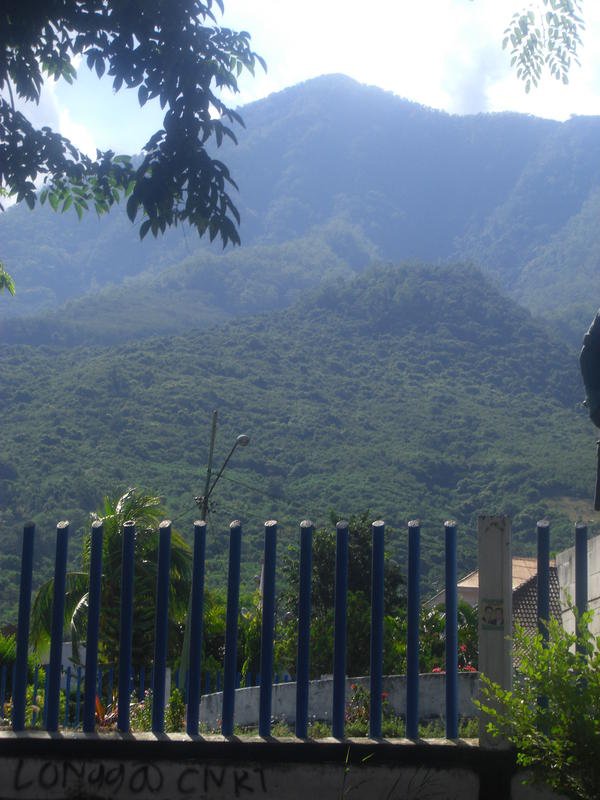
I had spent a restful night at Rulie's Hotel, an ancient, atmospheric lodging house redolent of the days when the Dutch held sway in these parts. Squat and square, with a steeply-pitched roof I could picture a couple of travelling officials sitting in cane chairs on the veranda enjoying a sundowner or three. The cane chairs were still there, a little worse for wear, but nevertheless comfortable. The previous evening they'd been the ideal vantage point to watch the sun slide beneath the horizon, the glowing sky a perfect backdrop for the assortment of water craft at anchor on the bay.
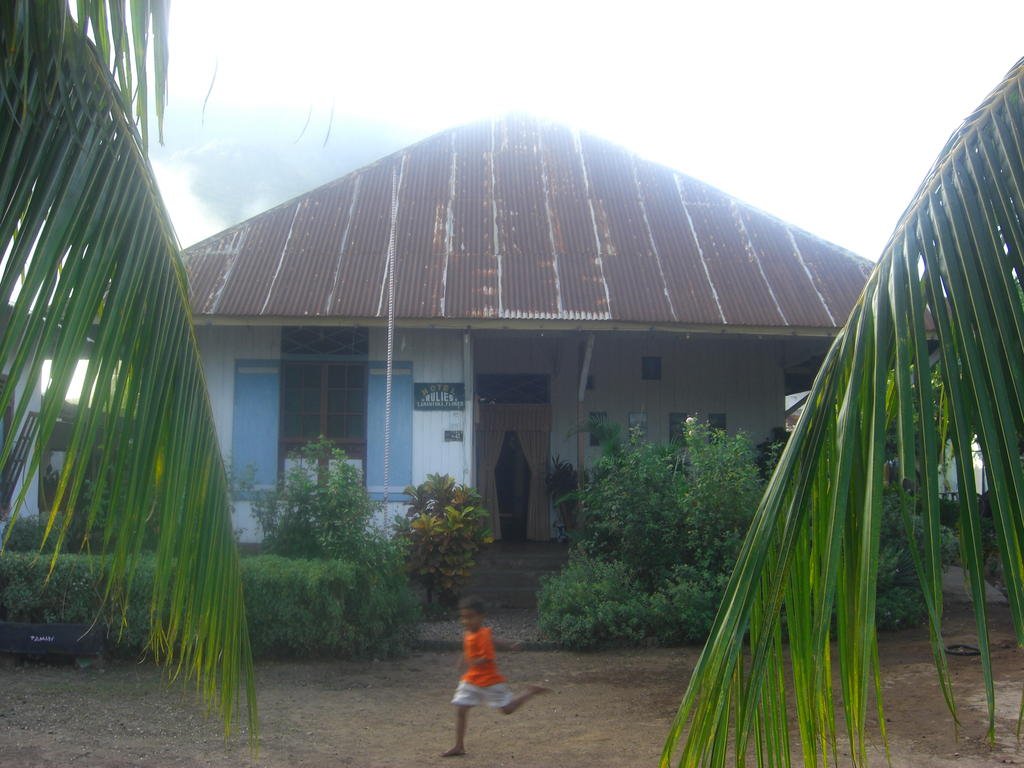
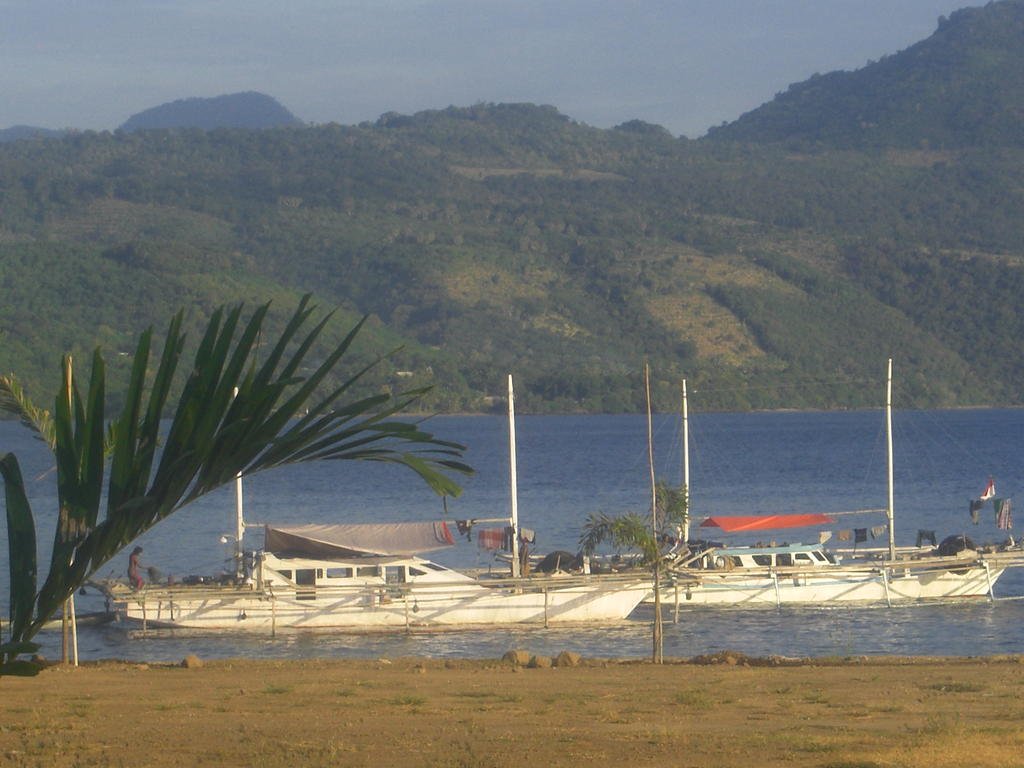
With a cold Bintang in hand I'd whiled away the time watching stallholders set up a night food market on the padang across the road. Later I'd joined them and, surrounded by the delicious smells of chicken and fish being grilled over hot coals, and amid the hubbub of conversation and the hiss of the pressure lanterns, I'd eaten a plate of delicious beef satay and ketupat. The balmy night air, the full moon rising and the graciousness of the comely waitress who served me, were the perfect accompaniment to the evening. As I'd strolled back to my lodgings, thinking of Ili Api and the adventure to come, the thought crossed my mind: life does not get much better than this.
I rose with the roosters. Showered and shaved, I took breakfast on the veranda. Lodgings paid, I stowed my gear on the footplate of my Honda Vario, bade farewell and headed for the port where the 'Sinar Mutiara', the 'Pearl Light', waited, ready to spirit me eastwards. Broad of beam and shallow of draft the 'Sinar Mutiara' had plied these waters for years. A solid wooden vessel she ferried passengers and cargo between Larantuka and Lewoleba, stopping by at Waiwerang on Adonara. A vital link in inter-island communication she had served her community loyally carrying the commerce of inter-island trade and ferrying loved ones home: the men, after their long stints labouring in the oil palm plantations and forests of East Malaysia and the women who'd been working as domestics in Malaysia or far-off Saudi Arabia and other points in the Arab world.
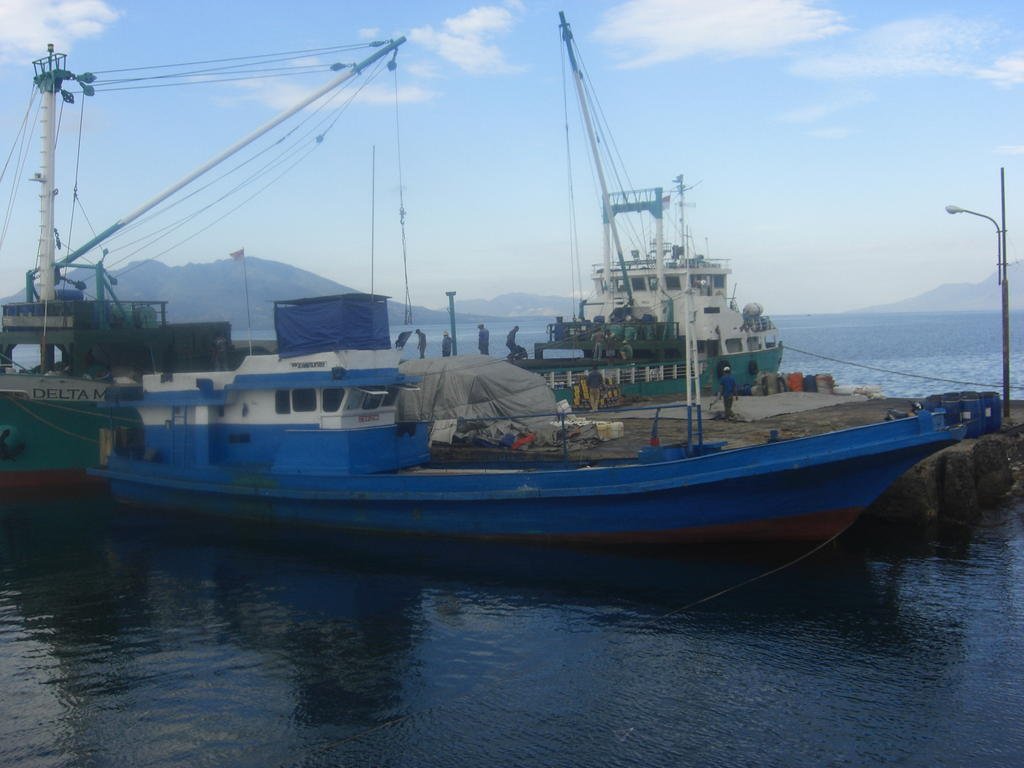
What the dock at Larantuka lacked in modern loading equipment was more than compensated for by the array of willing hands who stepped forward to help me man-handle my Honda aboard. There she joined another dozen bikes squeezed in among the general cargo of sacks of rice, tins of cooking oil, hands of bananas and passengers' belongings.
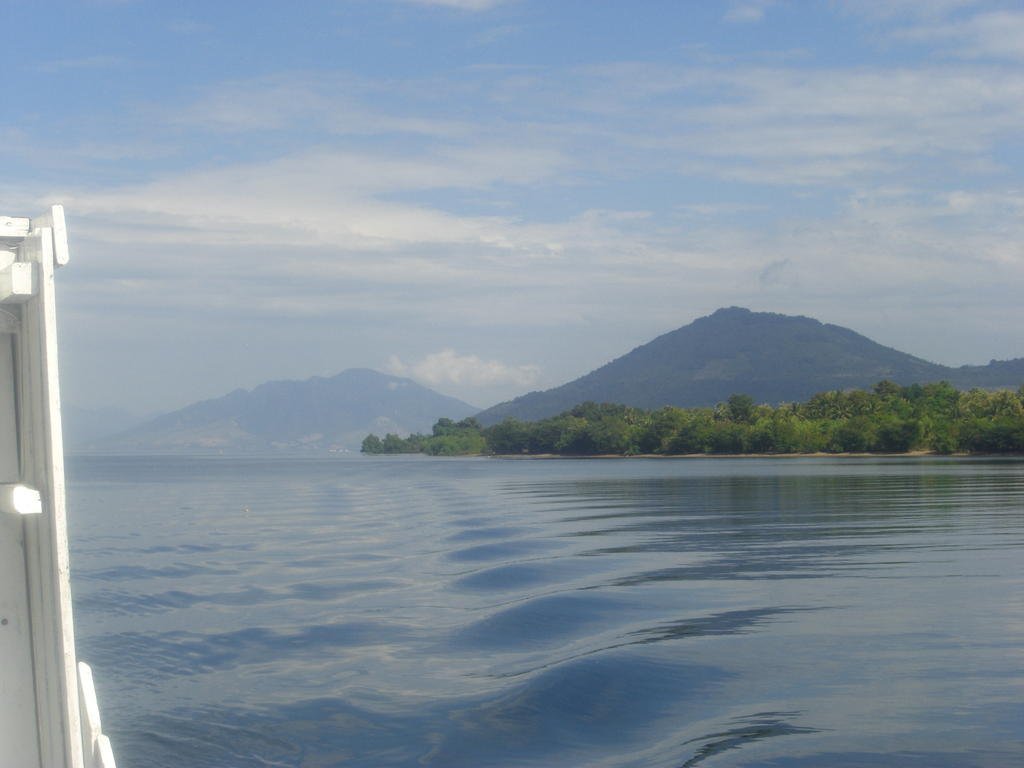
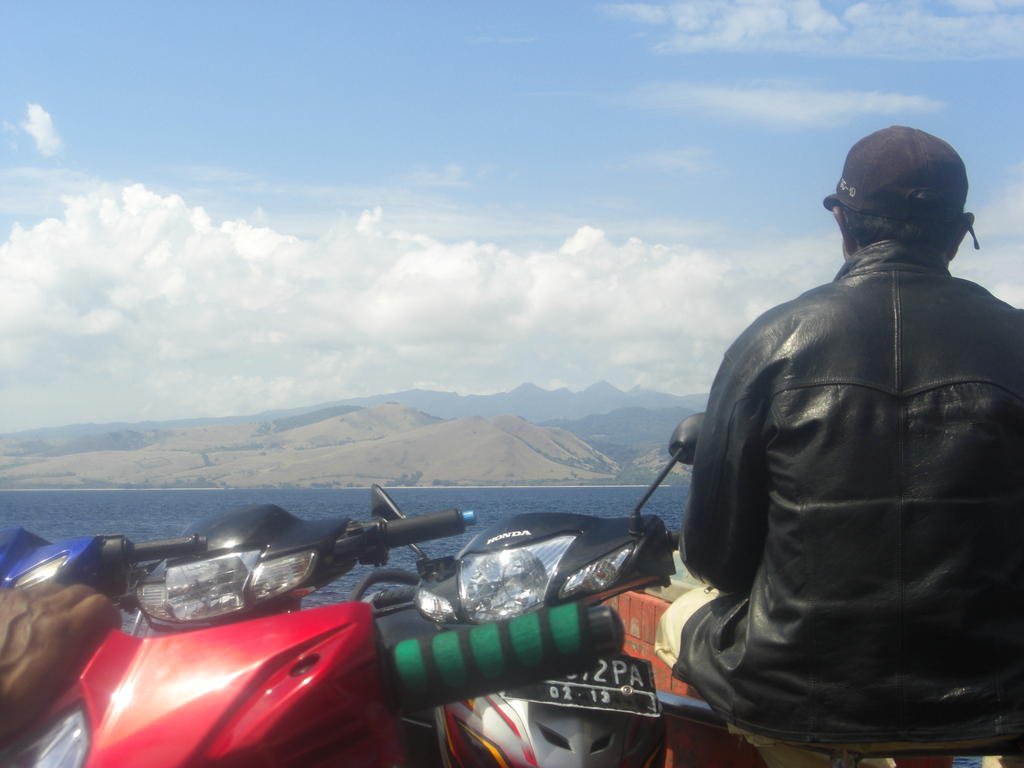
Passengers found comfort where they could. The benches below deck were fully occupied with women, children and the elderly. Men and youths arranged themselves atop the rice sacks, chatting and smoking amiably, excited to be going home again. I found myself a comfortable spot. Before long we weighed anchor and were soon sliding across a silent, unruffled sea our only company the sound of Sinar's marine diesel humming away to stern.
The bulk of Solor appeared to starboard. At first a smudge, it became more distinct with each passing minute. Jungle-clad hills tumbled down to kiss un-walked beaches. Nary a town or village inhabited this rugged side of the island. Ahead of us and slightly to port, Ili Boleng, Adonara's silent sentinel, stood watch over the narrow strait just as she had when Alfred Russell
Wallace, of The Malay Archipelago fame, passed this way in 1860. Outwardly, the scene had not changed much, the only sign of habitation being a communication tower that rose, red and white striped, from a prominent headland. Although things looked the same from afar, up close much had changed: the modern world has reached even this far-flung corner of Indonesia.
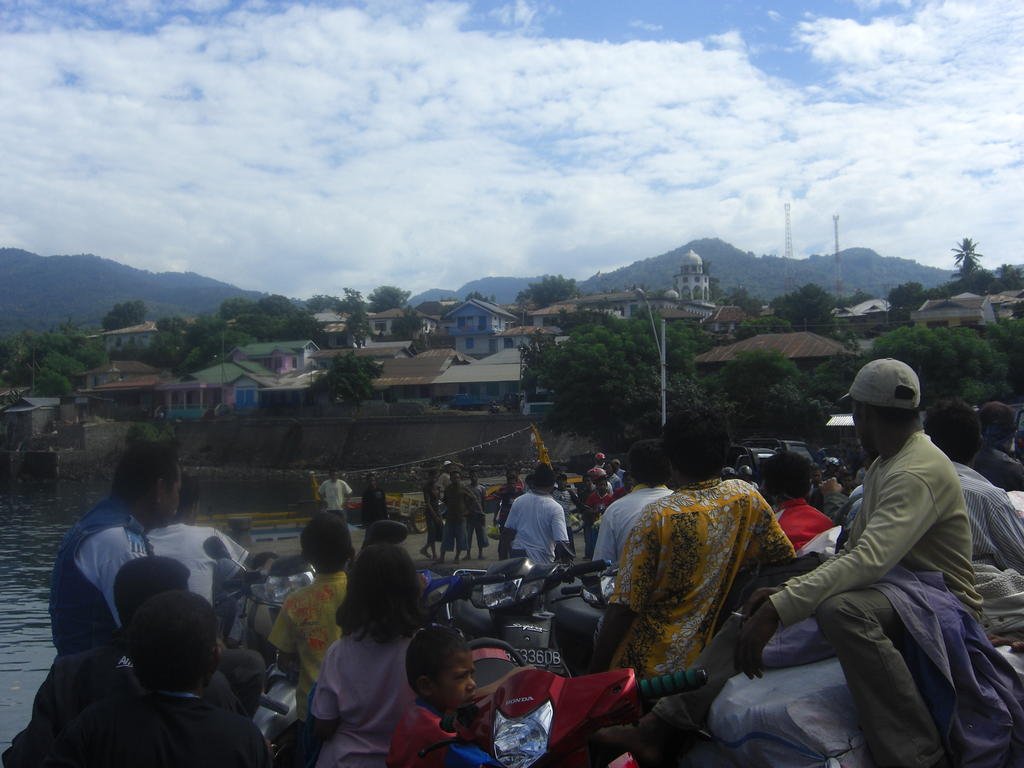
After an hour we crept closer to Adonara's shore and saw the first signs of life. A truck was picking its way slowly along a track and houses appeared adjacent to the beach. Further along the minarets of Adonara's mosque, and the spires of a church, poked above the trees. Our captain piloted Sinar toward the jetty where an excited crowd waited, eager to be re-united with loved ones; several men leapt from the cargo to embrace their children. The crew had witnessed this joyous scene time and again for the Sinar Mutiara was the umbilical cord connecting these folk to their home island.
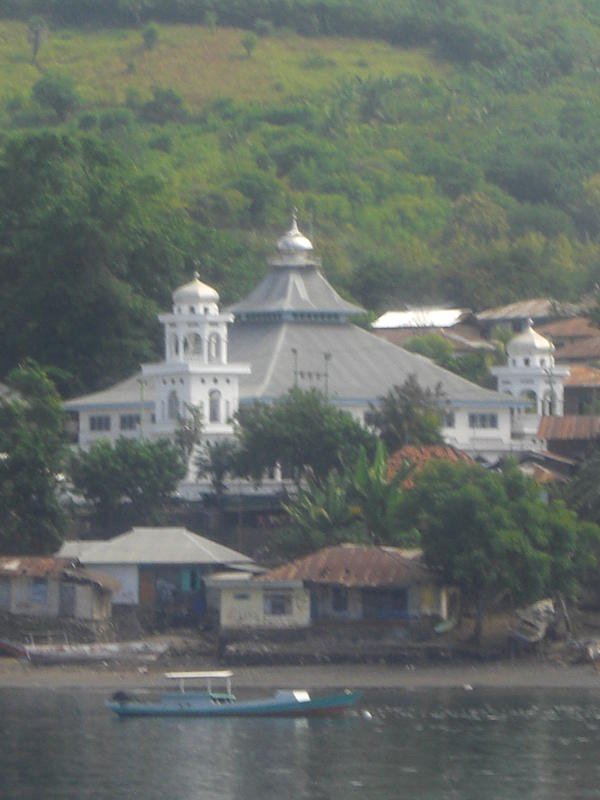
We tied up for half an hour as passengers disembarked and cargo was unloaded. People and goods bound for Lewoleba were taken on board. The last item to be loaded was a half-grown steer destined for a wedding feast. It lay on the edge of the dock, feet trussed, wild-eyed and breathing heavily. Slings were somehow threaded beneath the beast and a group of men tugged and struggled to pull it aboard. With a final effort they managed and the poor animal fell to the vessel's deck landing with a thud. It struggled and kicked briefly and then lay back exhausted, seemingly resigned to its fate.
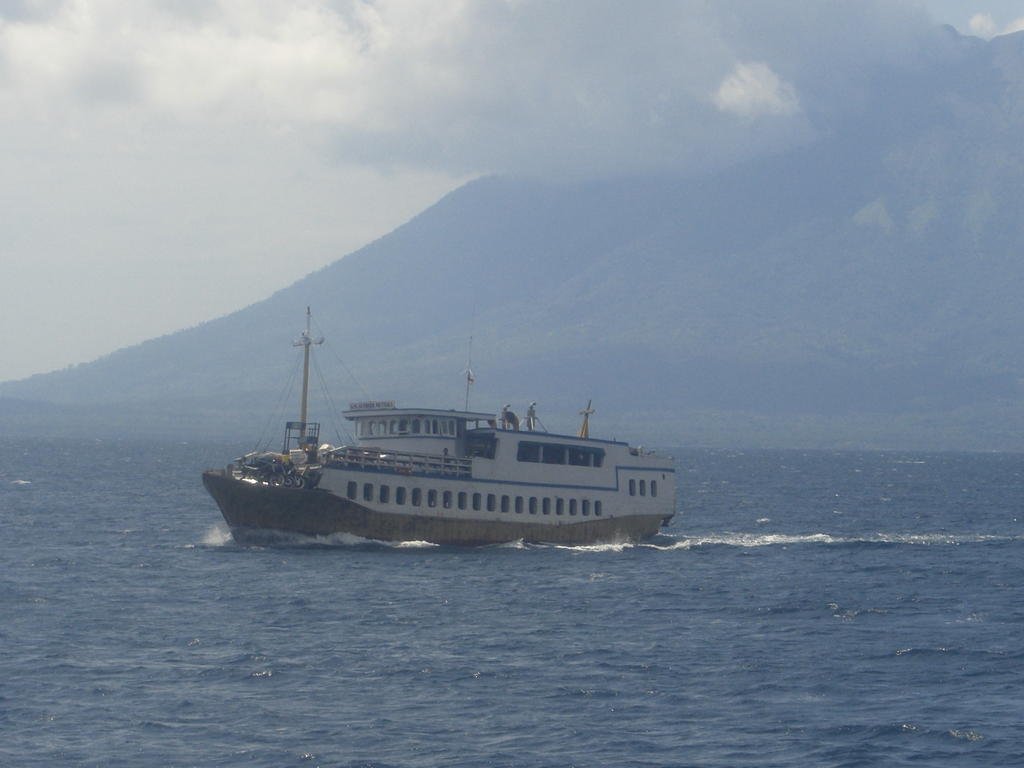
We cast off and motored away. Before long, Ili Api appeared in the distance. I watched fascinated as its outline began to take shape. It formed a magnificent backdrop to the vessels that passed by to port, their wash insufficient to cause even the slightest imbalance to our equilibrium. We passed secluded coves where golden sands were caressed by the gentle rippling of the sea. These sheltered waters had played host to the Spanish, the Portuguese, the Dutch, the English and the occasional privateer in search of a spice or silver-laden prize. I imagined the galleons and caravelles, and could almost feel the ghosts of mariners past as we journeyed onwards through the Solor Strait.
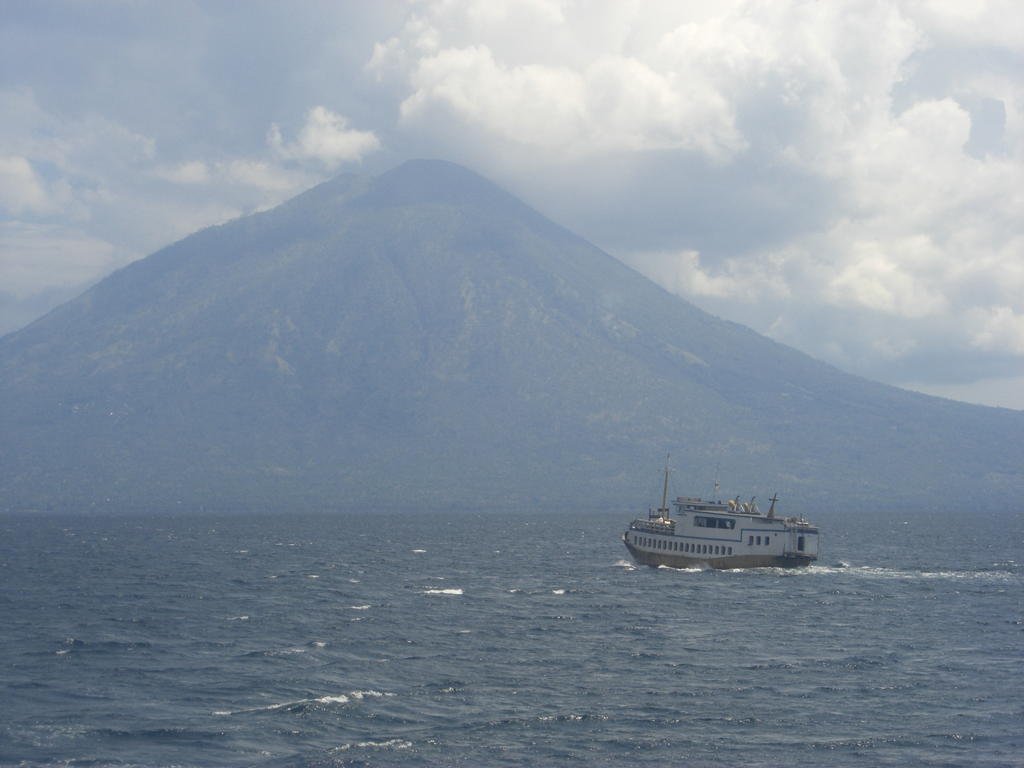
Four hours after departing Larantuka and I was riding out of Lewoleba's harbour gates. Just a couple of kilometres down the road I found what I was looking for - Lile Ili Homestay. Owned and operated by Jim, a Dutch-Indonesian who'd taken root on Lembata after being raised in Amsterdam and travelling the world, I'd stayed there before and loved the place. Built entirely of massive local timbers, it was not flash, but it was homely and welcoming and commanded magnificent views of Ili Api, across the bay.
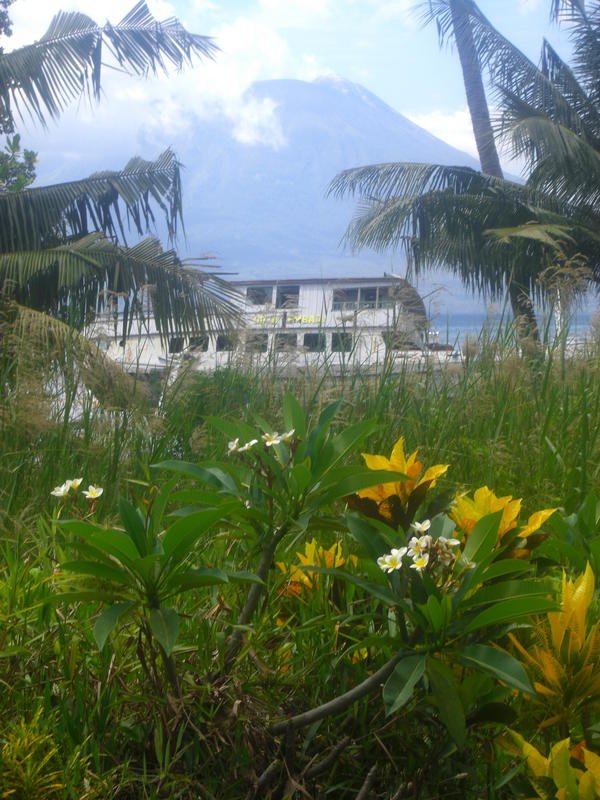
I stowed my gear and went for a ride around town. This didn't take long; there were no traffic lights. The only bank was a tiny branch of the BNI - Bank Negara Indonesia. The town consisted of a few pitted streets lined with shops and a hotch-potch of dwellings, warehouses, warungs, a couple of hotels, some workshops and a lone pool hall full of idlers. I returned to Lile Ili and had a snooze.
When I woke it was food o'clock so I wandered off in the direction of the port. On the way in I'd spotted a neon sign: "Restoran Moting Lomblen." It was a large, canopy-covered, outdoor setting with a stage at one end. Plastic chairs and tables were arranged as if for a wedding reception, and that indeed, as I was to find out later, was the primary source of its business.
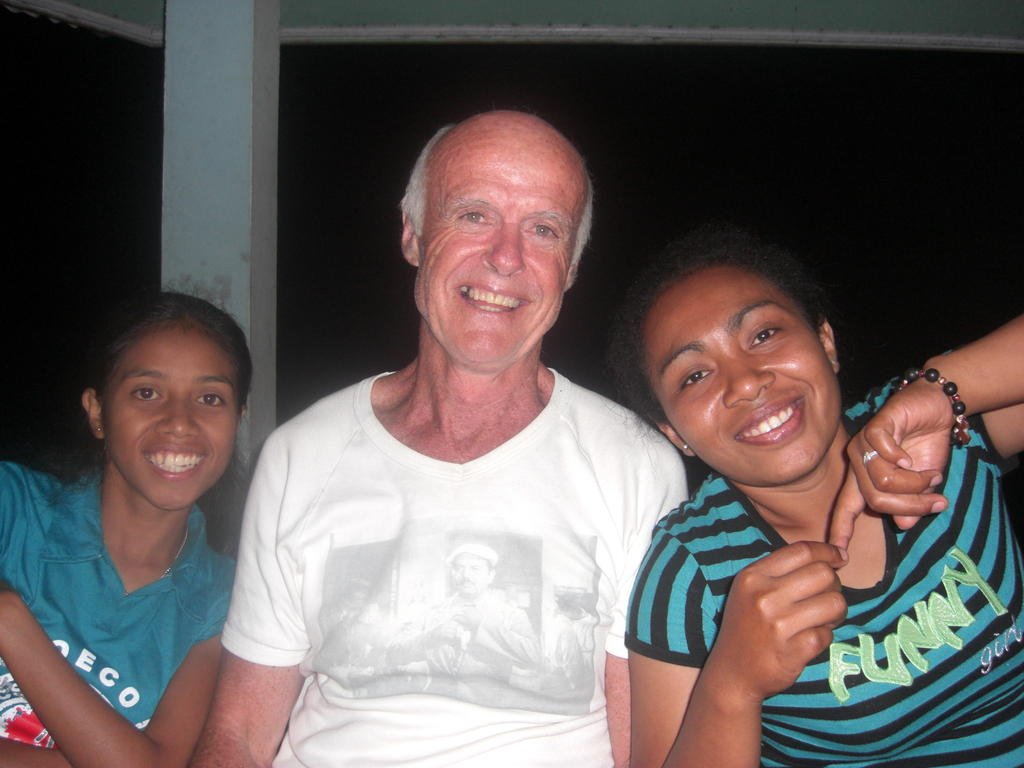
On this particular night, I was the only customer, so, to my delight, I had the undivided attention of Alex the manager and his staff of six fantastic waitresses and cooks. These people treated me as if I was some long lost prodigal son who had just returned to the bosom of his family. I dined royally on succulent barbequed snapper and bream, accompanied by delicious pelecing kankung (spicy spinach) and nasi goreng washed down with an icy cold Bintang.
The girls and Alex joined me while I ate. I was the first outsider to drop by for the year and we were already into May. They were keen to talk about my travels to date and my plans for Lembata. On hearing that I planned to climb Ili Api, Alex's became animated. His brother, Petrus, lived in Lamagute village astride the beach adjacent to the base of the mountain. From here it would be a 'short walk' to the summit - 1423m above sea level. I could stay with Petrus and he would find a reliable guide for me. Alex could arrange it all should I be willing to place my trust in him. I didn't think twice about his offer. I knew it to be genuine so I arranged to return the following evening to get the directions and the go-ahead to set off for Lamagute.
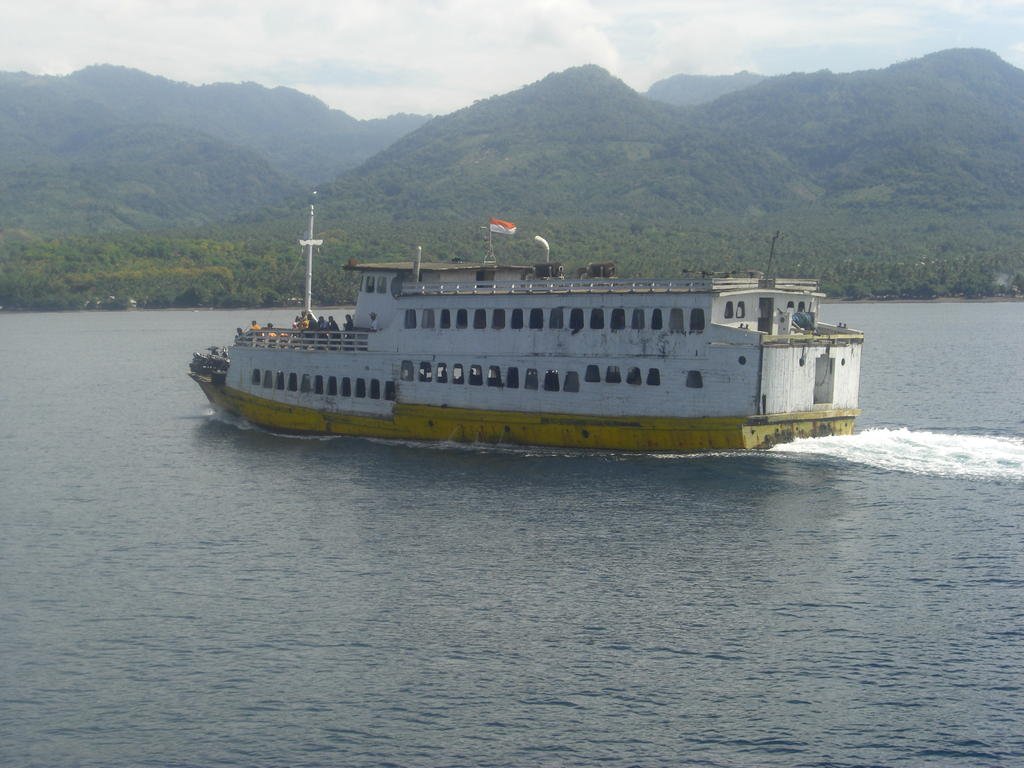
Alex was as good as his word. I spent another wonderful evening dining and joking with him and the girls before returning late to Lile Ili armed with the information I needed for the journey to Lamagute. I fell into bed primed for a good night's sleep.
I woke, showered and made ready to depart. After a leisurely breakfast on the wide deck where I had a clear view of Ili Api I bade goodbye to Jim, fired up the Honda and set off to find the coast road to the north-east. It wasn't long before I was clear of the town and threading my way past little fishing kampongs, the men busy repairing their nets, the women washing children at the well or roasting corn on tiny fires outside their houses.
The road, winding and narrow with lots of sand build-up on the corners, skirted the sea. It was bordered on both sides by stands of coconut. I took my time, luxuriating in the freedom of the ride, having the road to myself and the prospect of a great adventure waiting for me at the end - Ili Api! I stopped for a coffee at a roadside stall and was soon surrounded by the entire village all wanted to know where I was from and where I was going. Smiles all round they gave me a wave and wished me well on my journey.
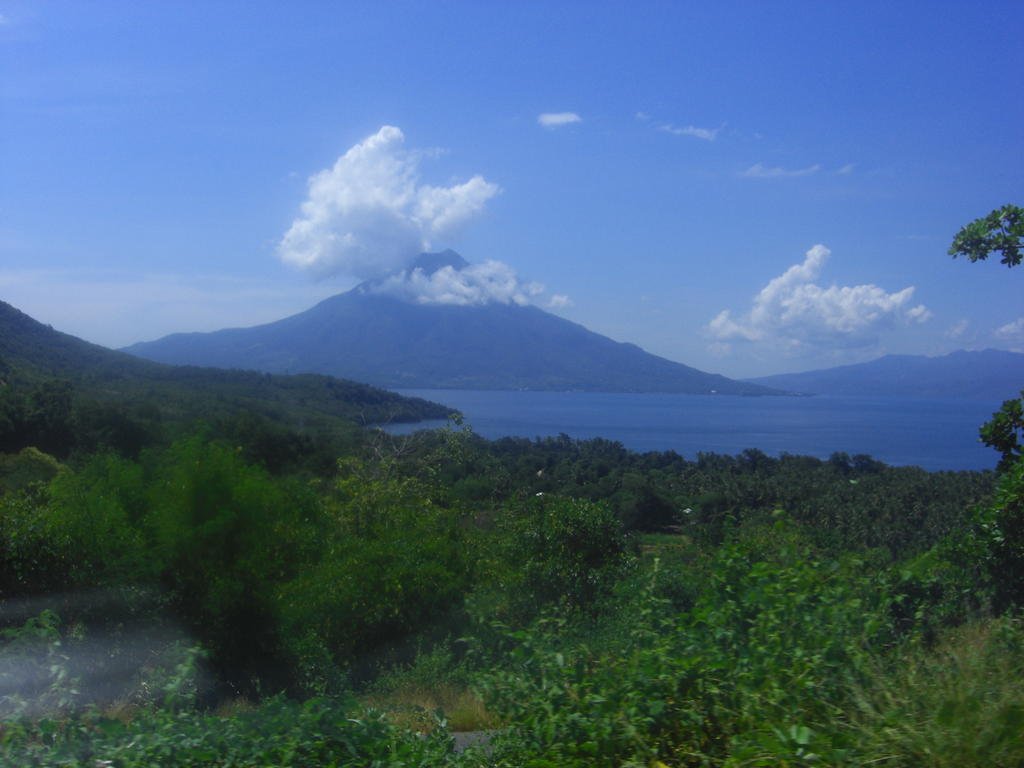
When I reached Lamagute it seemed that everyone knew I was coming. I was taken immediately to Petrus' house where I was shown to a small room and made to feel at home. With a coffee in hand we sat on the front veranda to enjoy the view of the sea just a stone's throw away. The neighbours called in to meet me - I met a lot of people that day! Petrus told me that Linus, my guide, would drop by in the early evening so, in the meantime, I went for a swim and explored the nearby coast.
After dinner, cooked by Petrus' granddaughter Maria, we sat out on the veranda chatting. I took a lot of people's photos which caused a huge amount of interest and a great deal of mirth. Linus arrived as promised and we discussed the arrangements for the climb. Linus was dark and wiry. He'd spent 12 years driving timber trucks in Borneo. He didn't say much; he didn't have to as he knew what he was about. He said he'd come for me about 3.00am. Then he was off. I too turned in for it was already late.
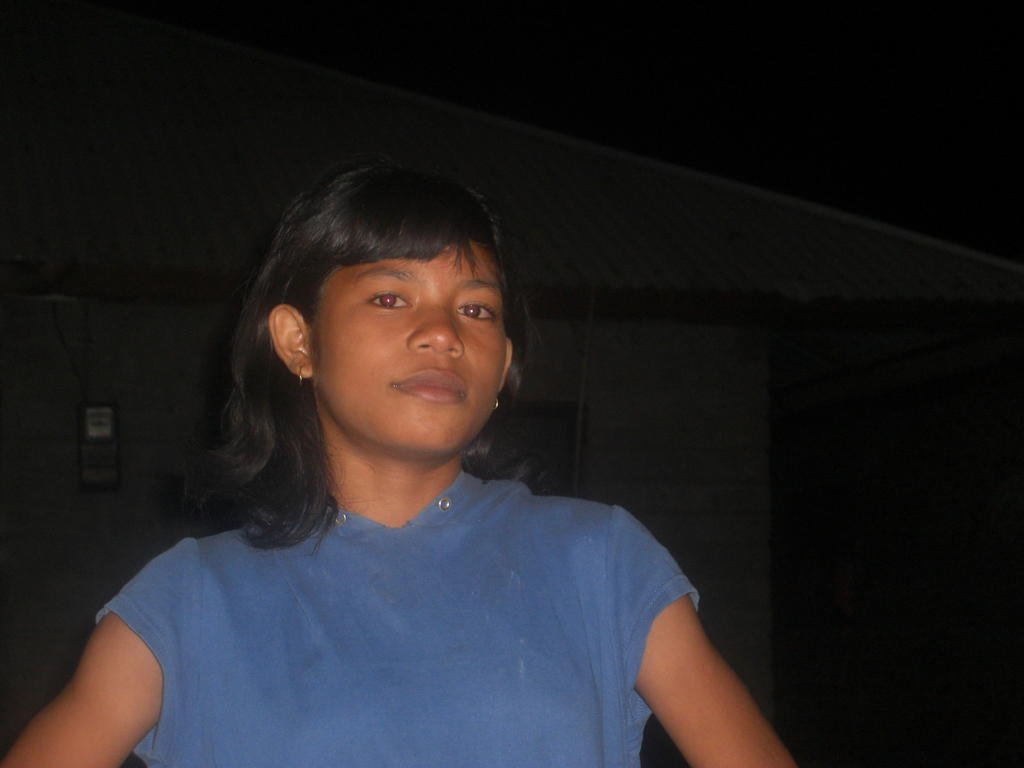
Linus duly arrived armed with a machete and a plastic bag. He wore shorts and a pair of flip-flops. We set off through the village and were soon climbing steadily up a rocky track that wound between fields of shoulder-high corn. The full moon cast a silvery glow over our progress which was rapid. I soon had a good sweat up and was thankful I'd decided that shorts, tee-shirt and runners were all that were needed for the climb.
After a while we left the cultivated zone and entered a eucalypt forest. There was a great deal of fallen timber which we picked our way over, under and around. Linus explained that a couple of years ago they'd been a fire which burnt out and weakened a lot of trees; many had subsequently fallen during the brief monsoon season. It was tough going but we only took brief rests.
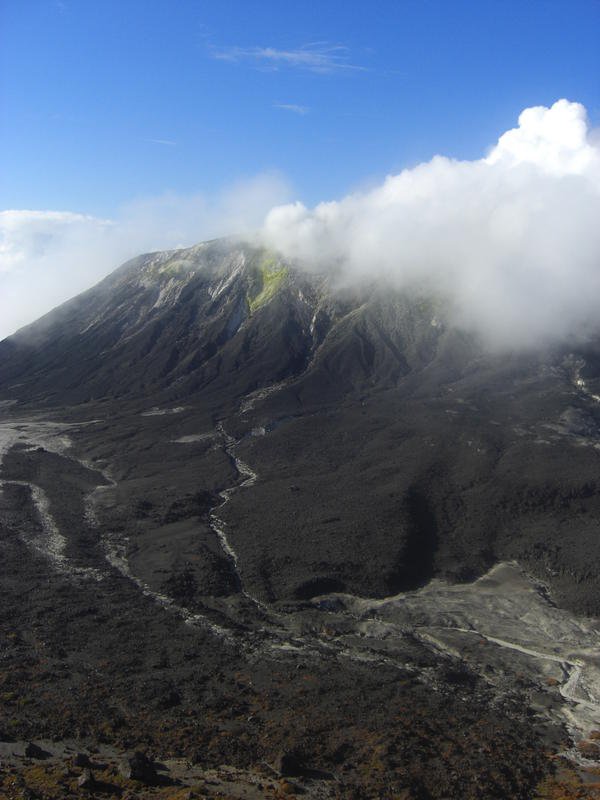
Climbing higher the timber began to thin out and we found ourselves up against a barrier - our way was blocked by thick alang-alang. Linus told me to take a break while he got to work with the parang. The razor-sharp implement, put to good use, soon had us moving onwards and upwards again but progress was slow. We took turns hacking away. Fortunately there was no dew otherwise we would have been drenched.
We persisted and after a struggle we reached a zone of low spinifex. We could feel the ground beneath our feet changing. It was now coarse and gravelly. Small stones and loose rocks appeared; the danger of a turned ankle dogged my every step. We were two hours in to the trip.
The longer we climbed the steeper the terrain became. Vegetation was very sparse. We had reached the lava flow - rough scoria, loose, slippery and sometimes sharp. One of Linus' thongs has broken so he'd ditched them. He made his way just as before on soles of iron. I couldn't have done it in a million years.
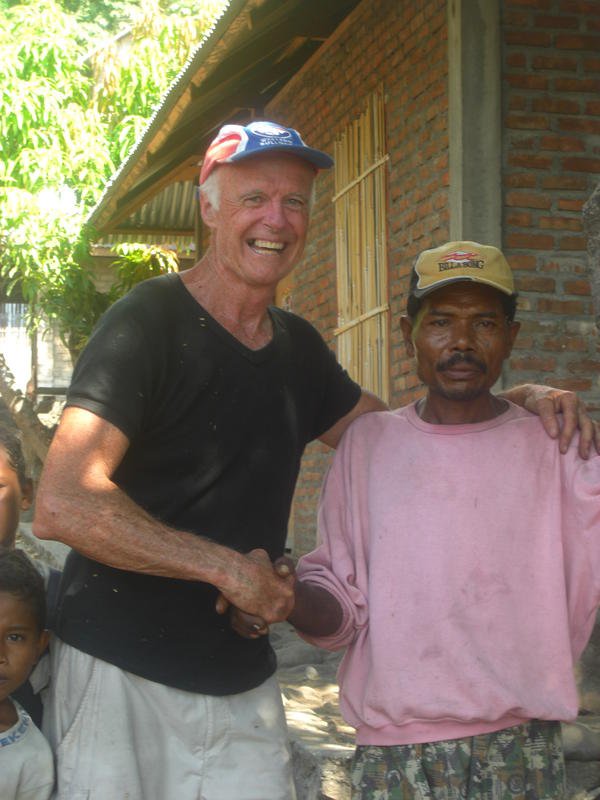
Around 5.30 the sky was began to lighten. We could make out the crater rim up ahead. It didn't seem far but experience told me these impressions were often deceptive. We trudged on, hearts keeping pace with the gradient, the sky changing from magenta to blue and then reddening in the east. We took a rest. The mountain fell away dramatically to meet the dark shadow of the sea far below. Then the light washed across the sky. Tiny specks of fishing boats and houses appeared; soon the village would wake again.
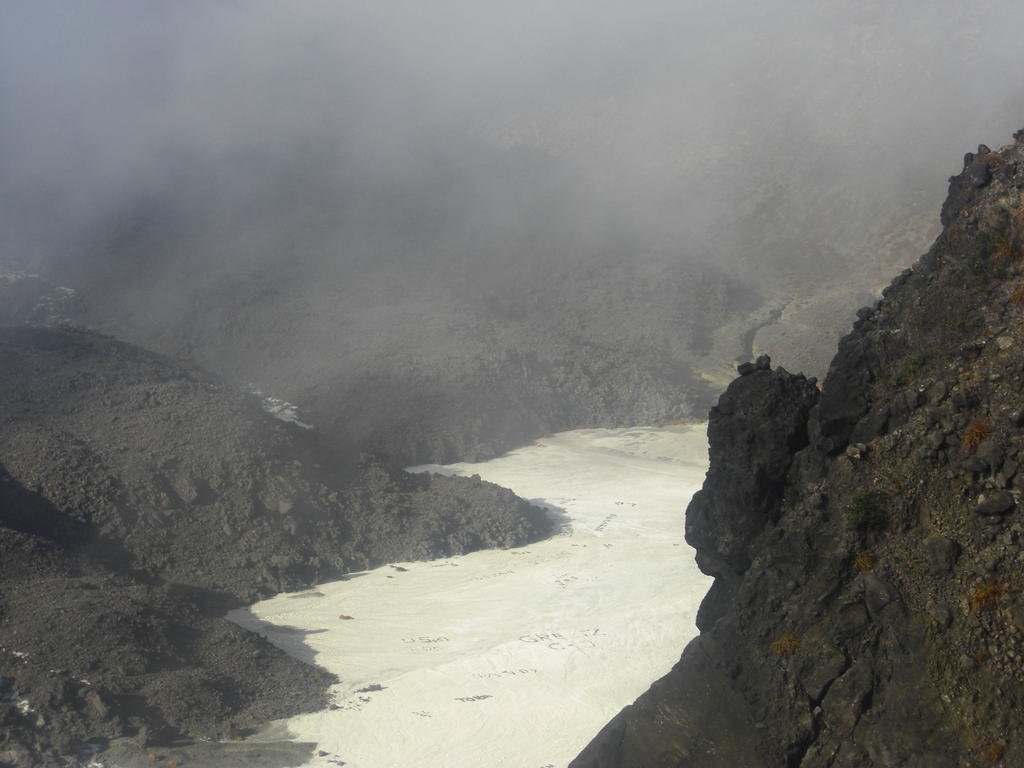
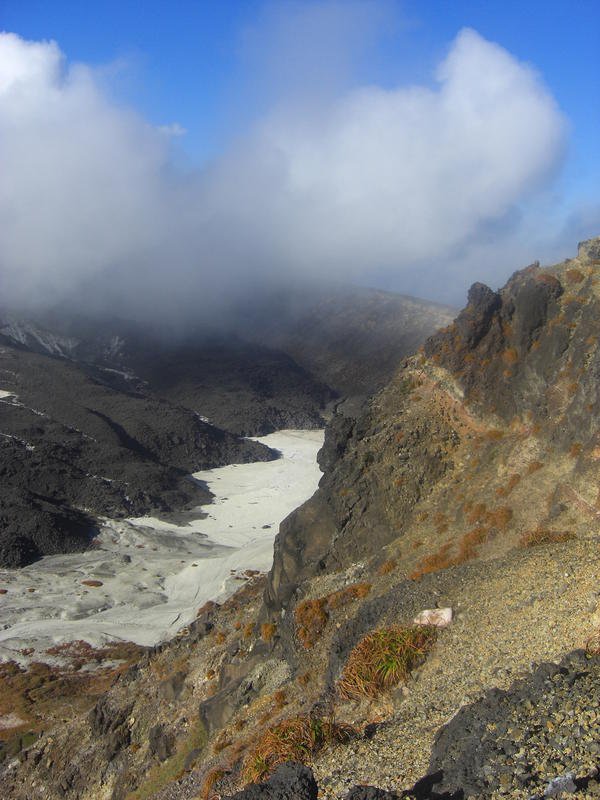
Unfortunately, some heavy cloud compromised the sunrise but the sight that met us when we reached the crater rim was fair compensation. We stared down into an alien world of jagged black rock, lava and solidified white sulphur. A serrated crater rim encircled this 200m deep abyss where from deep within vents emitted streams of sulphurous vapours - Dante's inferno minus the flames. Our eyes stung. Between fits of coughing we gulped down water, ate a few bananas and rested. Linus mentioned it had been eighteen months since anyone had made the climb. I felt privileged to have made it to a spot so seldom visited. Lewotolo's last eruption was in 1951 however she always remained tetchy, exhibiting regular bouts of incandescence and fumarolic activity. Stinging eyes made me think that another eruption would not surprise.
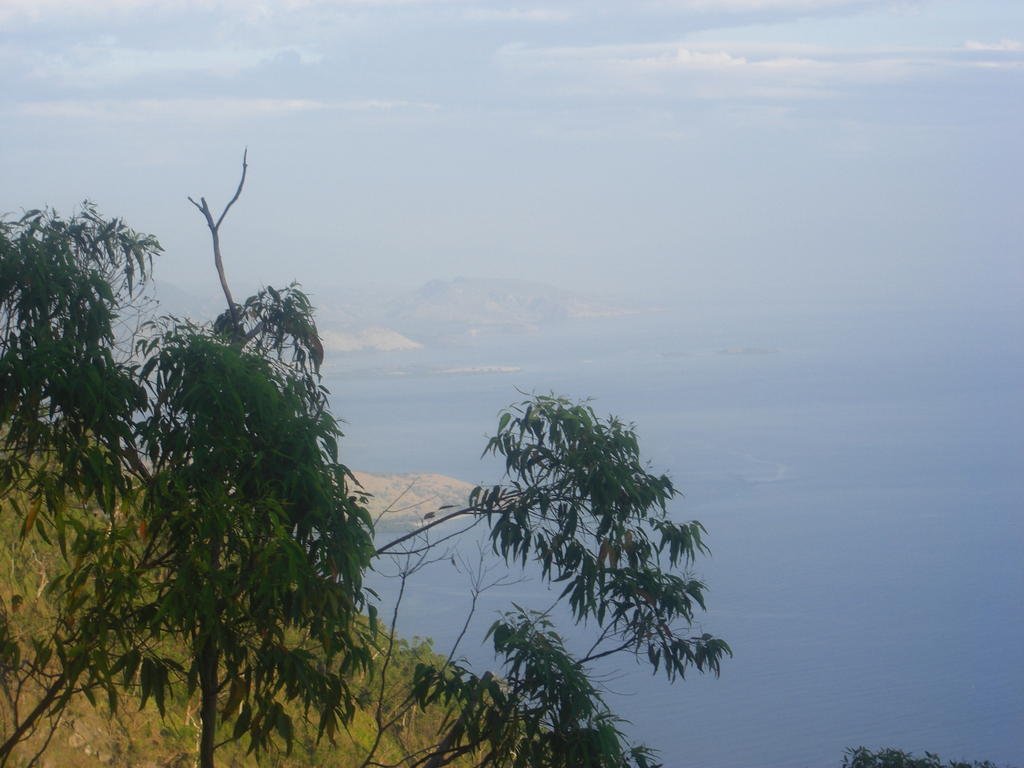
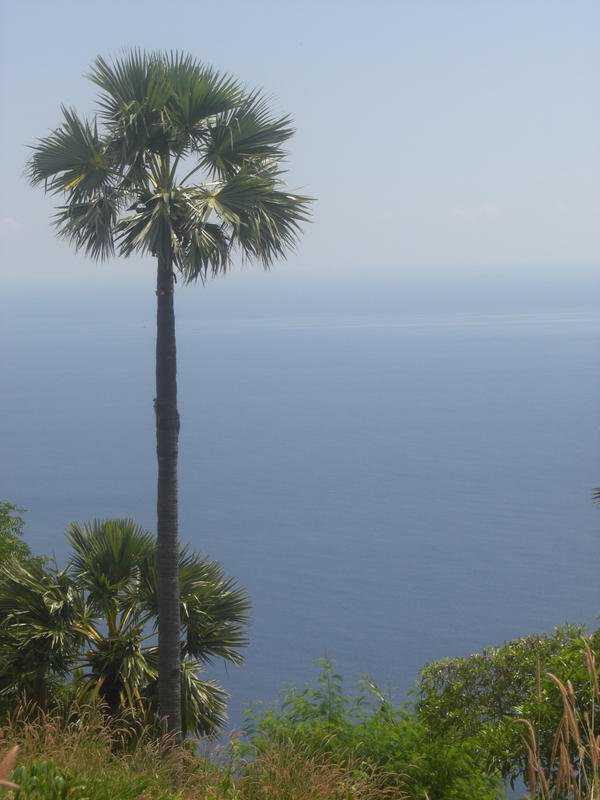
We took a few photos and lingered to enjoy the magnificent view. My mind turned to the next stage of the trip. After the descent I faced the delicious prospect of enjoying a few more ikan bakar dinners with Alex and the crew before the inevitable surrender to the siren call of the road. The long traverse of Flores and Sumbawa, back to home base in Kuta, Lombok, beckoned. I got to my feet, looked at Linus and said, 'Marilah'. And with that we switched our attention to the job at hand and set off back down the mountain.
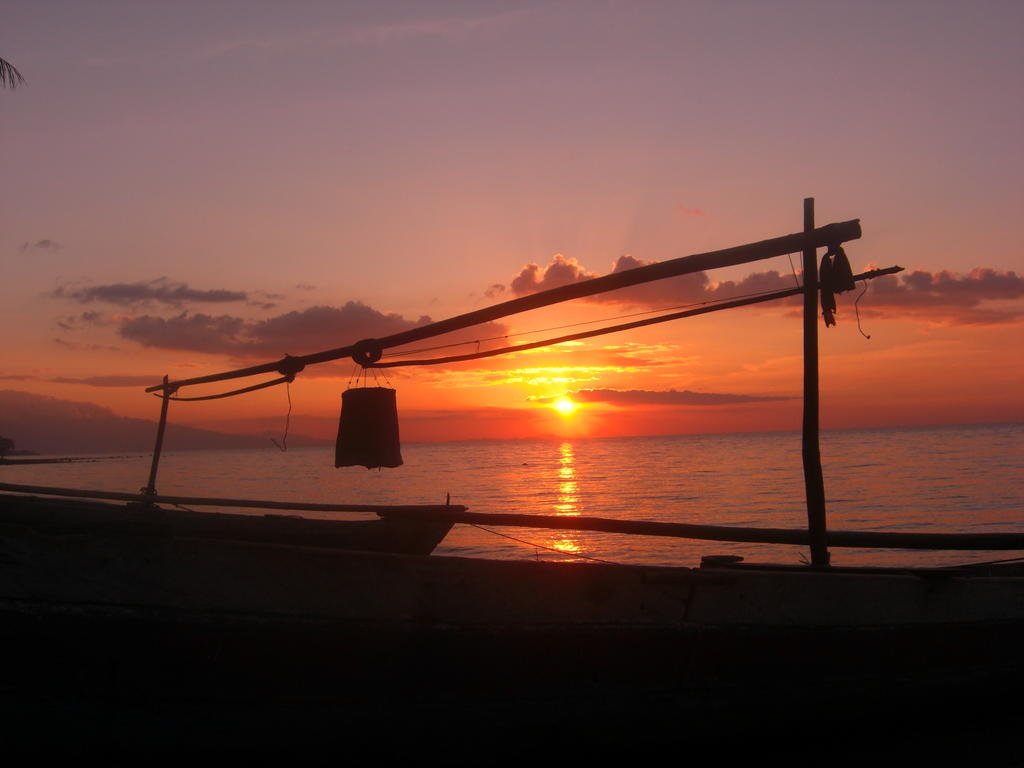
Nestling at the foot of brooding Ili Mandiri, Larantuka, at the eastern end of Flores, is the jumping off point for islands even further east - the Solor Archipelago and Alor. I was headed for Lewoleba on Lembata, which lay between Adonara and Pantar, to climb the fabled Ili Api or "Mountain of Fire".

I had spent a restful night at Rulie's Hotel, an ancient, atmospheric lodging house redolent of the days when the Dutch held sway in these parts. Squat and square, with a steeply-pitched roof I could picture a couple of travelling officials sitting in cane chairs on the veranda enjoying a sundowner or three. The cane chairs were still there, a little worse for wear, but nevertheless comfortable. The previous evening they'd been the ideal vantage point to watch the sun slide beneath the horizon, the glowing sky a perfect backdrop for the assortment of water craft at anchor on the bay.


With a cold Bintang in hand I'd whiled away the time watching stallholders set up a night food market on the padang across the road. Later I'd joined them and, surrounded by the delicious smells of chicken and fish being grilled over hot coals, and amid the hubbub of conversation and the hiss of the pressure lanterns, I'd eaten a plate of delicious beef satay and ketupat. The balmy night air, the full moon rising and the graciousness of the comely waitress who served me, were the perfect accompaniment to the evening. As I'd strolled back to my lodgings, thinking of Ili Api and the adventure to come, the thought crossed my mind: life does not get much better than this.
I rose with the roosters. Showered and shaved, I took breakfast on the veranda. Lodgings paid, I stowed my gear on the footplate of my Honda Vario, bade farewell and headed for the port where the 'Sinar Mutiara', the 'Pearl Light', waited, ready to spirit me eastwards. Broad of beam and shallow of draft the 'Sinar Mutiara' had plied these waters for years. A solid wooden vessel she ferried passengers and cargo between Larantuka and Lewoleba, stopping by at Waiwerang on Adonara. A vital link in inter-island communication she had served her community loyally carrying the commerce of inter-island trade and ferrying loved ones home: the men, after their long stints labouring in the oil palm plantations and forests of East Malaysia and the women who'd been working as domestics in Malaysia or far-off Saudi Arabia and other points in the Arab world.

What the dock at Larantuka lacked in modern loading equipment was more than compensated for by the array of willing hands who stepped forward to help me man-handle my Honda aboard. There she joined another dozen bikes squeezed in among the general cargo of sacks of rice, tins of cooking oil, hands of bananas and passengers' belongings.


Passengers found comfort where they could. The benches below deck were fully occupied with women, children and the elderly. Men and youths arranged themselves atop the rice sacks, chatting and smoking amiably, excited to be going home again. I found myself a comfortable spot. Before long we weighed anchor and were soon sliding across a silent, unruffled sea our only company the sound of Sinar's marine diesel humming away to stern.
The bulk of Solor appeared to starboard. At first a smudge, it became more distinct with each passing minute. Jungle-clad hills tumbled down to kiss un-walked beaches. Nary a town or village inhabited this rugged side of the island. Ahead of us and slightly to port, Ili Boleng, Adonara's silent sentinel, stood watch over the narrow strait just as she had when Alfred Russell
Wallace, of The Malay Archipelago fame, passed this way in 1860. Outwardly, the scene had not changed much, the only sign of habitation being a communication tower that rose, red and white striped, from a prominent headland. Although things looked the same from afar, up close much had changed: the modern world has reached even this far-flung corner of Indonesia.

After an hour we crept closer to Adonara's shore and saw the first signs of life. A truck was picking its way slowly along a track and houses appeared adjacent to the beach. Further along the minarets of Adonara's mosque, and the spires of a church, poked above the trees. Our captain piloted Sinar toward the jetty where an excited crowd waited, eager to be re-united with loved ones; several men leapt from the cargo to embrace their children. The crew had witnessed this joyous scene time and again for the Sinar Mutiara was the umbilical cord connecting these folk to their home island.

We tied up for half an hour as passengers disembarked and cargo was unloaded. People and goods bound for Lewoleba were taken on board. The last item to be loaded was a half-grown steer destined for a wedding feast. It lay on the edge of the dock, feet trussed, wild-eyed and breathing heavily. Slings were somehow threaded beneath the beast and a group of men tugged and struggled to pull it aboard. With a final effort they managed and the poor animal fell to the vessel's deck landing with a thud. It struggled and kicked briefly and then lay back exhausted, seemingly resigned to its fate.

We cast off and motored away. Before long, Ili Api appeared in the distance. I watched fascinated as its outline began to take shape. It formed a magnificent backdrop to the vessels that passed by to port, their wash insufficient to cause even the slightest imbalance to our equilibrium. We passed secluded coves where golden sands were caressed by the gentle rippling of the sea. These sheltered waters had played host to the Spanish, the Portuguese, the Dutch, the English and the occasional privateer in search of a spice or silver-laden prize. I imagined the galleons and caravelles, and could almost feel the ghosts of mariners past as we journeyed onwards through the Solor Strait.

Four hours after departing Larantuka and I was riding out of Lewoleba's harbour gates. Just a couple of kilometres down the road I found what I was looking for - Lile Ili Homestay. Owned and operated by Jim, a Dutch-Indonesian who'd taken root on Lembata after being raised in Amsterdam and travelling the world, I'd stayed there before and loved the place. Built entirely of massive local timbers, it was not flash, but it was homely and welcoming and commanded magnificent views of Ili Api, across the bay.

I stowed my gear and went for a ride around town. This didn't take long; there were no traffic lights. The only bank was a tiny branch of the BNI - Bank Negara Indonesia. The town consisted of a few pitted streets lined with shops and a hotch-potch of dwellings, warehouses, warungs, a couple of hotels, some workshops and a lone pool hall full of idlers. I returned to Lile Ili and had a snooze.
When I woke it was food o'clock so I wandered off in the direction of the port. On the way in I'd spotted a neon sign: "Restoran Moting Lomblen." It was a large, canopy-covered, outdoor setting with a stage at one end. Plastic chairs and tables were arranged as if for a wedding reception, and that indeed, as I was to find out later, was the primary source of its business.

On this particular night, I was the only customer, so, to my delight, I had the undivided attention of Alex the manager and his staff of six fantastic waitresses and cooks. These people treated me as if I was some long lost prodigal son who had just returned to the bosom of his family. I dined royally on succulent barbequed snapper and bream, accompanied by delicious pelecing kankung (spicy spinach) and nasi goreng washed down with an icy cold Bintang.
The girls and Alex joined me while I ate. I was the first outsider to drop by for the year and we were already into May. They were keen to talk about my travels to date and my plans for Lembata. On hearing that I planned to climb Ili Api, Alex's became animated. His brother, Petrus, lived in Lamagute village astride the beach adjacent to the base of the mountain. From here it would be a 'short walk' to the summit - 1423m above sea level. I could stay with Petrus and he would find a reliable guide for me. Alex could arrange it all should I be willing to place my trust in him. I didn't think twice about his offer. I knew it to be genuine so I arranged to return the following evening to get the directions and the go-ahead to set off for Lamagute.

Alex was as good as his word. I spent another wonderful evening dining and joking with him and the girls before returning late to Lile Ili armed with the information I needed for the journey to Lamagute. I fell into bed primed for a good night's sleep.
I woke, showered and made ready to depart. After a leisurely breakfast on the wide deck where I had a clear view of Ili Api I bade goodbye to Jim, fired up the Honda and set off to find the coast road to the north-east. It wasn't long before I was clear of the town and threading my way past little fishing kampongs, the men busy repairing their nets, the women washing children at the well or roasting corn on tiny fires outside their houses.
The road, winding and narrow with lots of sand build-up on the corners, skirted the sea. It was bordered on both sides by stands of coconut. I took my time, luxuriating in the freedom of the ride, having the road to myself and the prospect of a great adventure waiting for me at the end - Ili Api! I stopped for a coffee at a roadside stall and was soon surrounded by the entire village all wanted to know where I was from and where I was going. Smiles all round they gave me a wave and wished me well on my journey.

When I reached Lamagute it seemed that everyone knew I was coming. I was taken immediately to Petrus' house where I was shown to a small room and made to feel at home. With a coffee in hand we sat on the front veranda to enjoy the view of the sea just a stone's throw away. The neighbours called in to meet me - I met a lot of people that day! Petrus told me that Linus, my guide, would drop by in the early evening so, in the meantime, I went for a swim and explored the nearby coast.
After dinner, cooked by Petrus' granddaughter Maria, we sat out on the veranda chatting. I took a lot of people's photos which caused a huge amount of interest and a great deal of mirth. Linus arrived as promised and we discussed the arrangements for the climb. Linus was dark and wiry. He'd spent 12 years driving timber trucks in Borneo. He didn't say much; he didn't have to as he knew what he was about. He said he'd come for me about 3.00am. Then he was off. I too turned in for it was already late.

Linus duly arrived armed with a machete and a plastic bag. He wore shorts and a pair of flip-flops. We set off through the village and were soon climbing steadily up a rocky track that wound between fields of shoulder-high corn. The full moon cast a silvery glow over our progress which was rapid. I soon had a good sweat up and was thankful I'd decided that shorts, tee-shirt and runners were all that were needed for the climb.
After a while we left the cultivated zone and entered a eucalypt forest. There was a great deal of fallen timber which we picked our way over, under and around. Linus explained that a couple of years ago they'd been a fire which burnt out and weakened a lot of trees; many had subsequently fallen during the brief monsoon season. It was tough going but we only took brief rests.

Climbing higher the timber began to thin out and we found ourselves up against a barrier - our way was blocked by thick alang-alang. Linus told me to take a break while he got to work with the parang. The razor-sharp implement, put to good use, soon had us moving onwards and upwards again but progress was slow. We took turns hacking away. Fortunately there was no dew otherwise we would have been drenched.
We persisted and after a struggle we reached a zone of low spinifex. We could feel the ground beneath our feet changing. It was now coarse and gravelly. Small stones and loose rocks appeared; the danger of a turned ankle dogged my every step. We were two hours in to the trip.
The longer we climbed the steeper the terrain became. Vegetation was very sparse. We had reached the lava flow - rough scoria, loose, slippery and sometimes sharp. One of Linus' thongs has broken so he'd ditched them. He made his way just as before on soles of iron. I couldn't have done it in a million years.

Around 5.30 the sky was began to lighten. We could make out the crater rim up ahead. It didn't seem far but experience told me these impressions were often deceptive. We trudged on, hearts keeping pace with the gradient, the sky changing from magenta to blue and then reddening in the east. We took a rest. The mountain fell away dramatically to meet the dark shadow of the sea far below. Then the light washed across the sky. Tiny specks of fishing boats and houses appeared; soon the village would wake again.


Unfortunately, some heavy cloud compromised the sunrise but the sight that met us when we reached the crater rim was fair compensation. We stared down into an alien world of jagged black rock, lava and solidified white sulphur. A serrated crater rim encircled this 200m deep abyss where from deep within vents emitted streams of sulphurous vapours - Dante's inferno minus the flames. Our eyes stung. Between fits of coughing we gulped down water, ate a few bananas and rested. Linus mentioned it had been eighteen months since anyone had made the climb. I felt privileged to have made it to a spot so seldom visited. Lewotolo's last eruption was in 1951 however she always remained tetchy, exhibiting regular bouts of incandescence and fumarolic activity. Stinging eyes made me think that another eruption would not surprise.


We took a few photos and lingered to enjoy the magnificent view. My mind turned to the next stage of the trip. After the descent I faced the delicious prospect of enjoying a few more ikan bakar dinners with Alex and the crew before the inevitable surrender to the siren call of the road. The long traverse of Flores and Sumbawa, back to home base in Kuta, Lombok, beckoned. I got to my feet, looked at Linus and said, 'Marilah'. And with that we switched our attention to the job at hand and set off back down the mountain.


